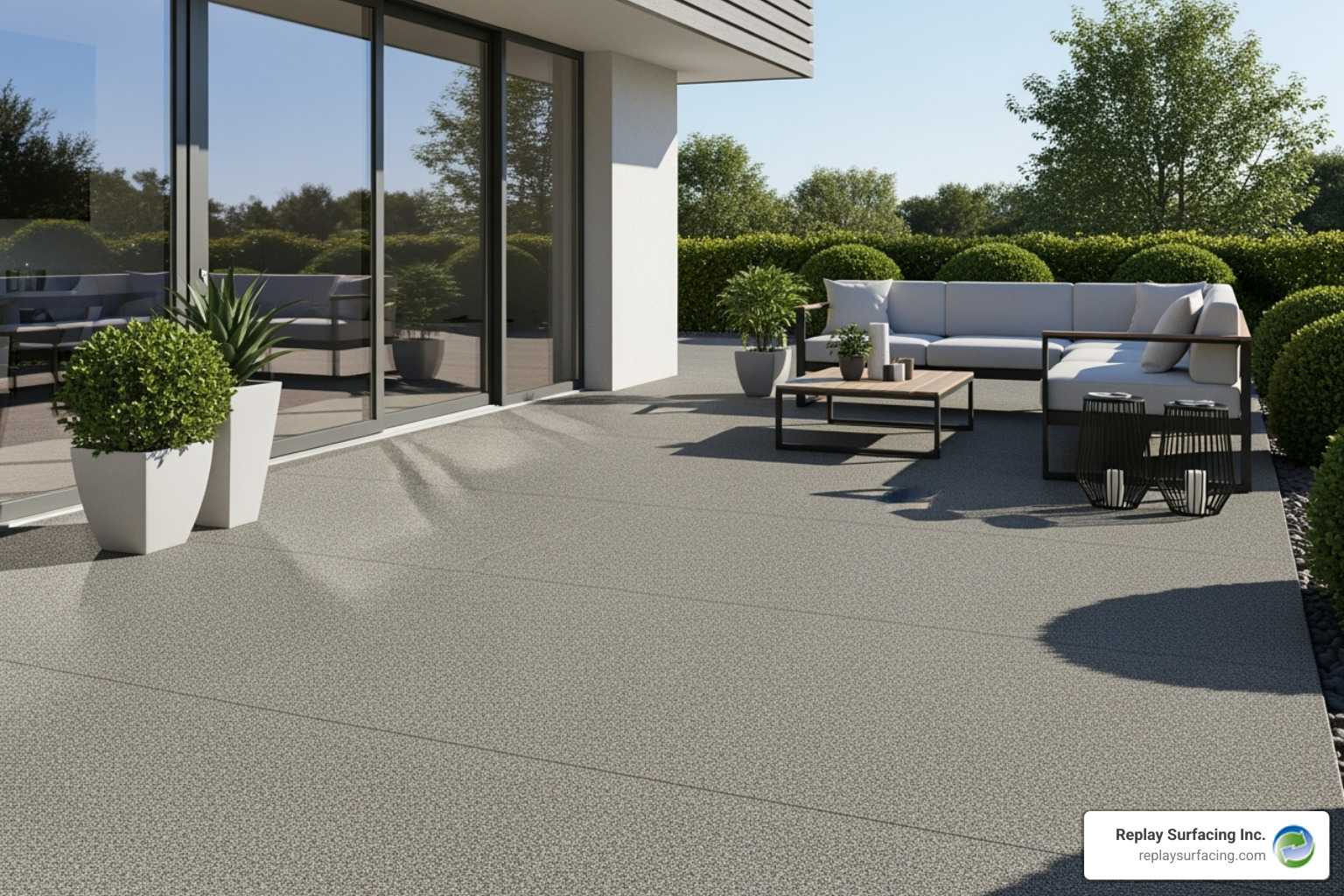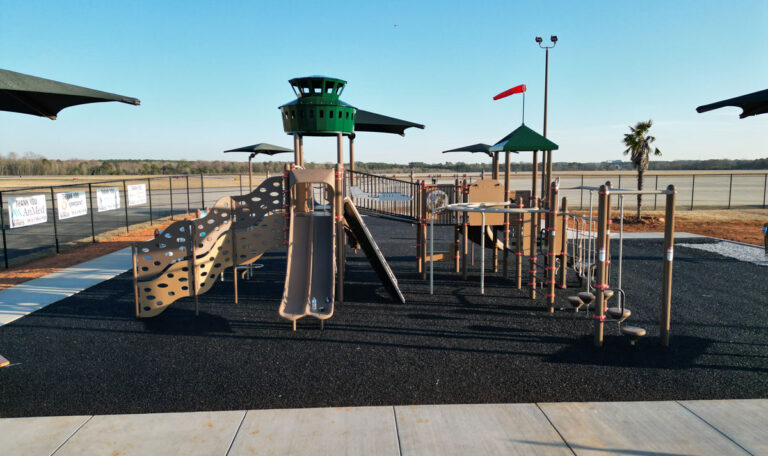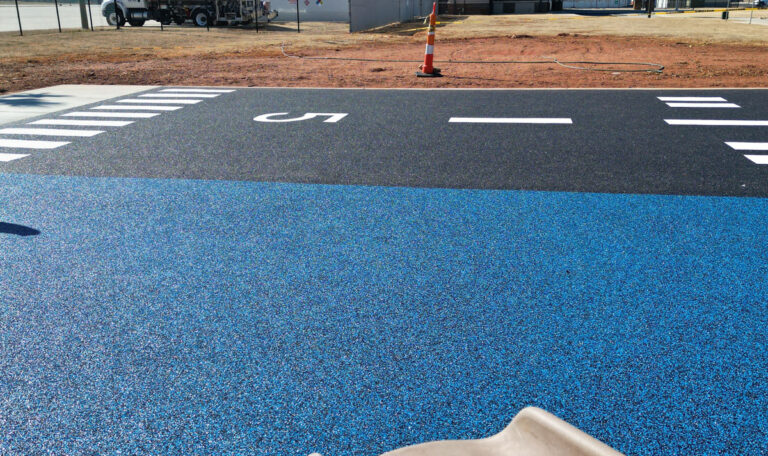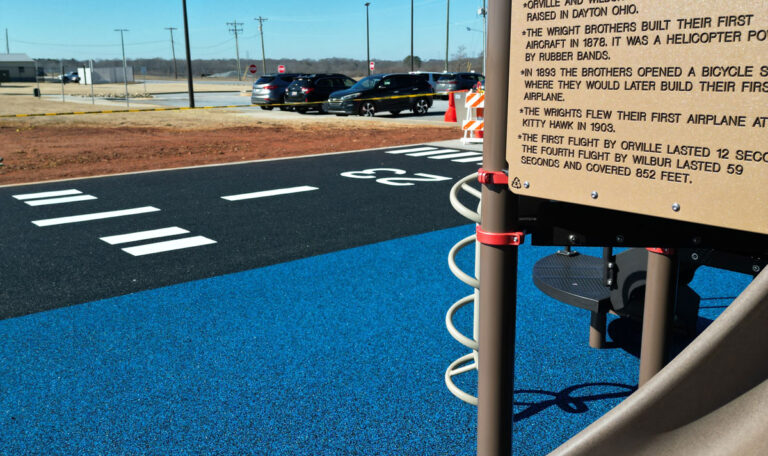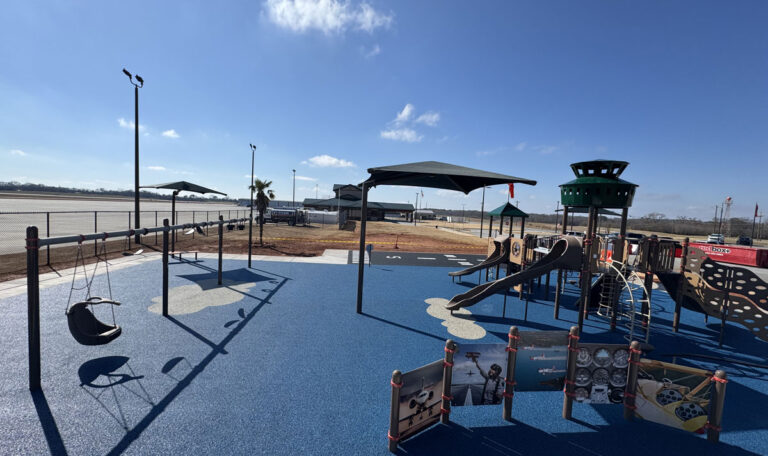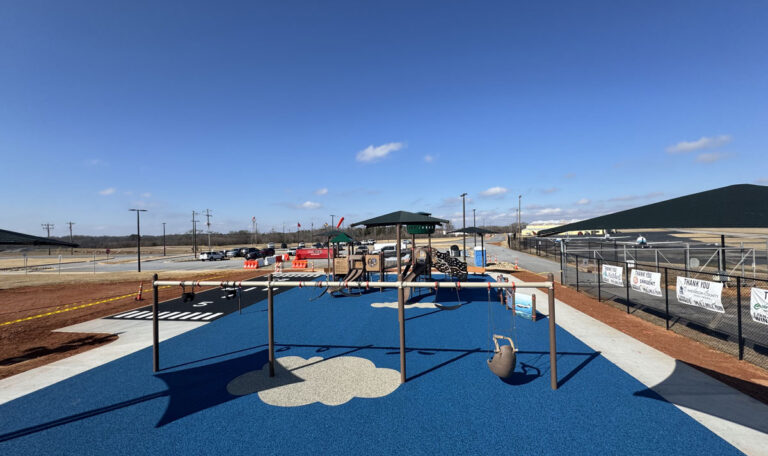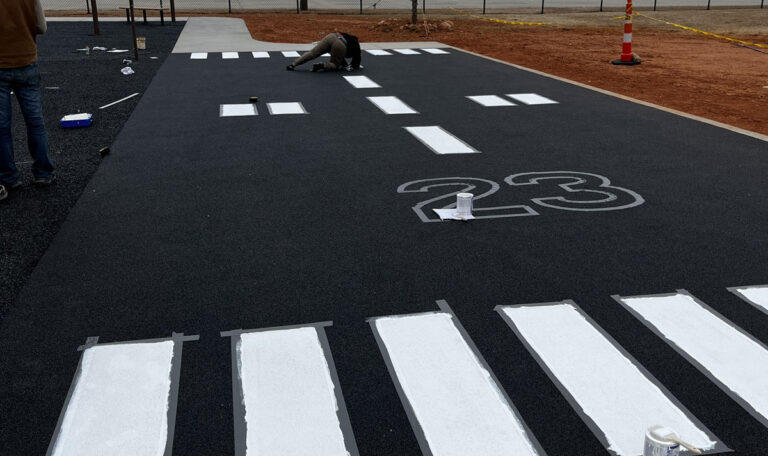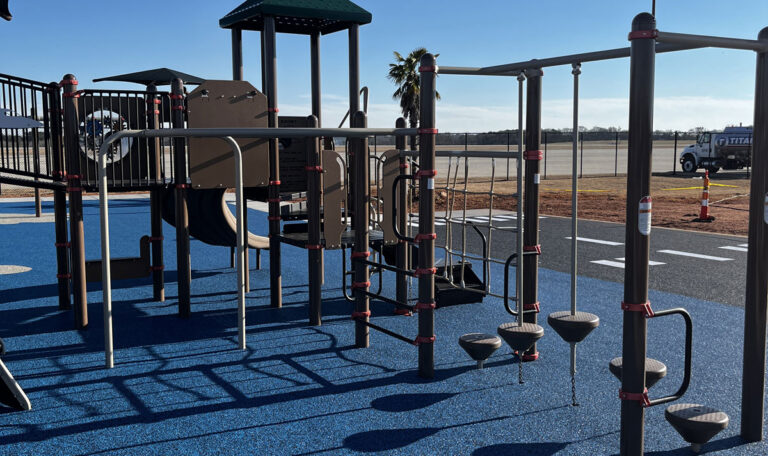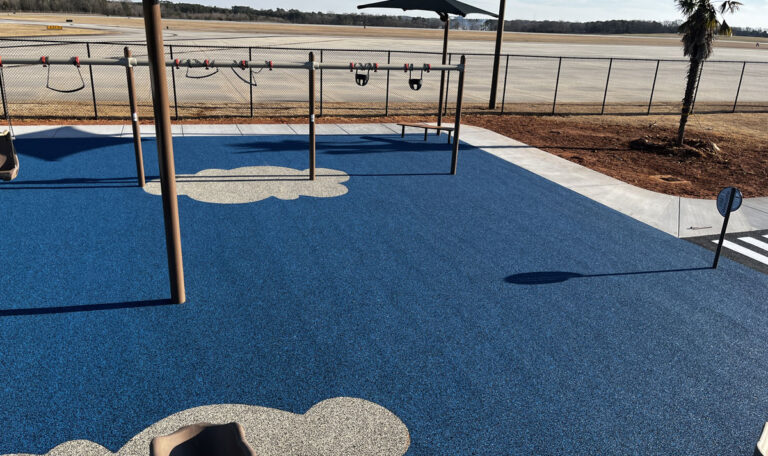Why Rubber Deck Coating is Your Deck’s Best Friend
Tired of your deck looking worn, faded, or dangerously slippery? A rubber deck coating could be the perfect solution. It’s not just about aesthetics; it’s about changing your outdoor space into a durable, safe, and comfortable haven.
Here’s why rubber deck coating stands out:
- Exceptional Durability: It’s often 10 times stronger than traditional deck paint, resisting wear, tear, and constant exposure to the elements.
- Superior Slip Resistance: Many formulations offer textured, non-slip surfaces, making your deck safer for family, friends, and pets, even when wet.
- Heat Reduction: Specialized coatings can reduce surface temperatures by up to 35%, making your deck comfortable for bare feet on hot days.
- Long-lasting Protection: Enjoy peace of mind with products offering warranties, saving you from yearly repainting.
Imagine a deck that stays beautiful and functional for years with minimal effort. This guide will explore how rubber deck coatings can make that a reality for your home or facility.
I’m Landon Olson. With a background in mechanical engineering and an MBA, I’ve seen how innovative solutions like rubber deck coating can transform spaces and contribute to a more sustainable future. At Replay Surfacing, we’re dedicated to recycling scrap tires into high-quality, eco-friendly products that bring durability and safety to every surface.
To summarize the key benefits of rubber deck coating, here’s an infographic:
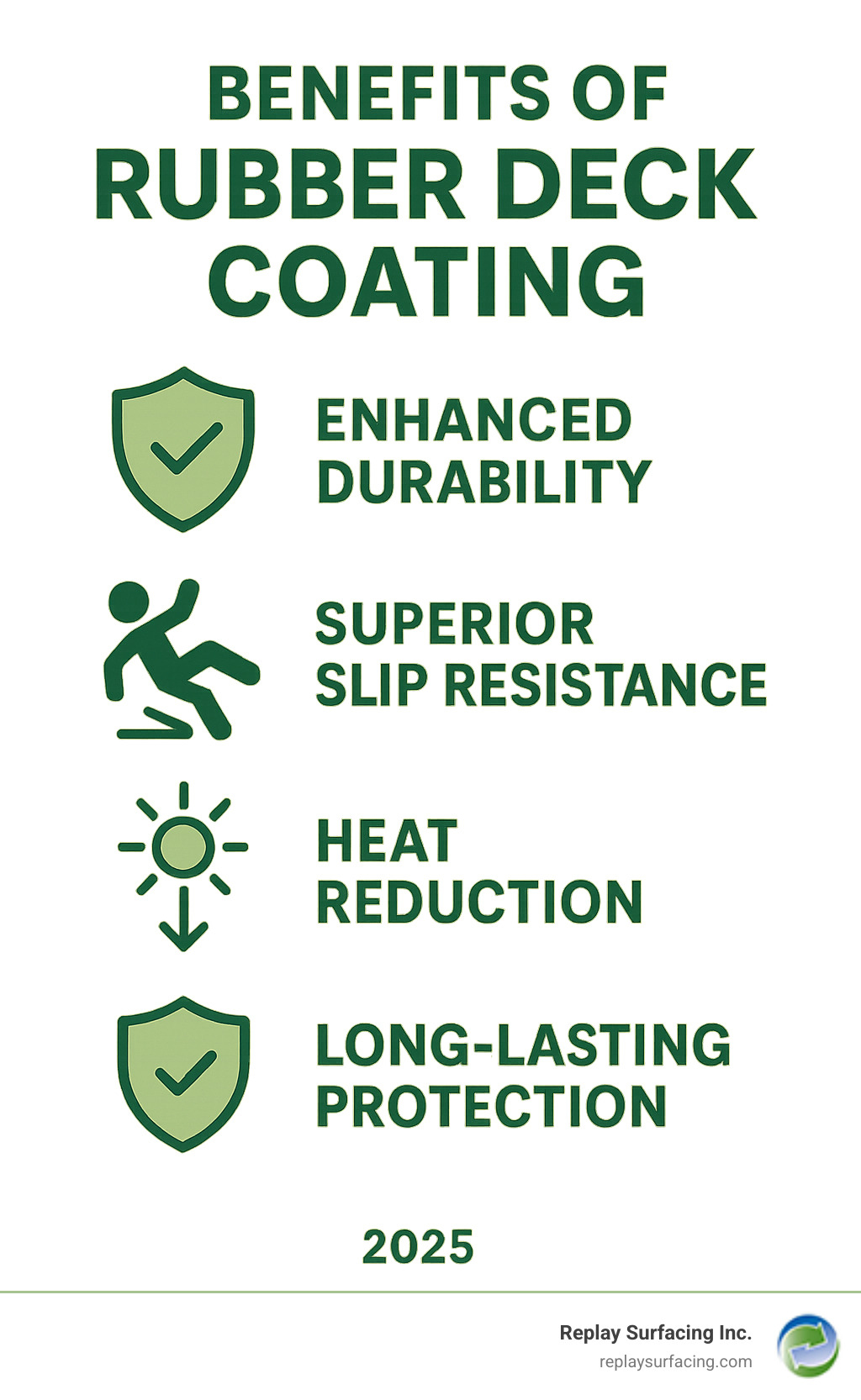
What is a Rubber Deck Coating and Why Choose It?
Let’s get right to it! At its heart, a rubber deck coating is like giving your deck a superhero shield. It’s a special protective, waterproof layer that covers and seals your deck’s surface. Unlike your typical paint or stain, these coatings are packed with clever polymers. These polymers give them amazing flexibility, help them stick super well, and make them incredibly tough.
Imagine a deck surface that’s not just pretty, but also 10 times stronger than regular deck paint! That’s what a rubber deck coating can offer. It creates a truly seamless finish that looks fantastic and gives your deck unparalleled protection against the elements. If you’re curious to dive even deeper, you can find more info about rubberized deck coating and all its wonderful benefits.
So, why should you pick a rubber deck coating for your outdoor space? Well, the perks are huge! They mainly focus on making your deck incredibly durable, wonderfully safe, and super comfortable. These coatings are fantastic at standing up to rough weather, they create a reliable non-slip surface, and they can even keep your deck noticeably cooler underfoot. Plus, they offer fantastic UV protection to keep your deck looking vibrant for years. For more tips on keeping your outdoor areas safe, take a peek at our insights into non-slip pool deck surfaces.
The Best Durability of Rubber Coatings
When we talk about the durability of rubber deck coatings, we’re truly talking about a product built to last. These coatings are designed to shrug off heavy foot traffic, laugh at harsh weather conditions, and stand strong against the sun’s relentless UV rays. (Speaking of, ever wondered what UV rays are? You can learn more here).
Unlike those traditional paints that often crack, peel, and fade away after just a year or two, rubber deck coatings keep their good looks and integrity for many years. They actively resist cracking and peeling, which is a huge relief! This incredible toughness comes from their unique makeup, often using special polymers like polyurethane and acrylics. These create a strong yet flexible surface. This flexibility is key! It means the coating can expand and shrink with temperature changes without breaking or getting brittle – a common problem for less advanced materials. In fact, some advanced rubber products can stretch an impressive 600% without breaking! This flexibility means your deck is much better protected from moisture, helping to stop common headaches like wood rot and concrete spalling.
Superior Safety and Comfort
Safety first, right? Especially on outdoor surfaces that can become slick when wet. This is where the amazing slip-resistance of a rubber deck coating really shines! Many types come with a textured finish that gives you excellent grip, greatly lowering the chance of slips and falls. This is true even when your deck is wet from rain or splashes from the pool. For an even deeper look into why this is so important, check out The Importance of Anti-Slip Rubber Surface for Pools and Patios.
But it’s not just about preventing tumbles. Rubber deck coatings also make your outdoor living space much more comfortable. Ever done that little dance across a scorching hot deck in the middle of summer? Not fun! Good news: certain rubber deck coatings, especially those with “Cool Foot” technology, are made to reduce heat transfer by up to 35% compared to regular paint. This means your deck stays cooler, making it perfect for barefoot strolls even on the hottest days. Plus, the natural springiness of these coatings creates a softer, more cushioned surface underfoot. It’s gentle on your joints and makes your deck a truly inviting spot for everyone to relax and play.
Types of Rubber Deck Coatings: Application Methods
So, you’re ready to transform your outdoor space with a rubber deck coating! That’s fantastic. Now, let’s talk about how these amazing coatings get onto your deck. Generally, there are two main ways to apply them: you can go the DIY route with a liquid-applied coating, or opt for a professional, poured-in-place system. Both methods deliver those wonderful rubberized surface benefits, but they cater to different needs, project sizes, and budgets.
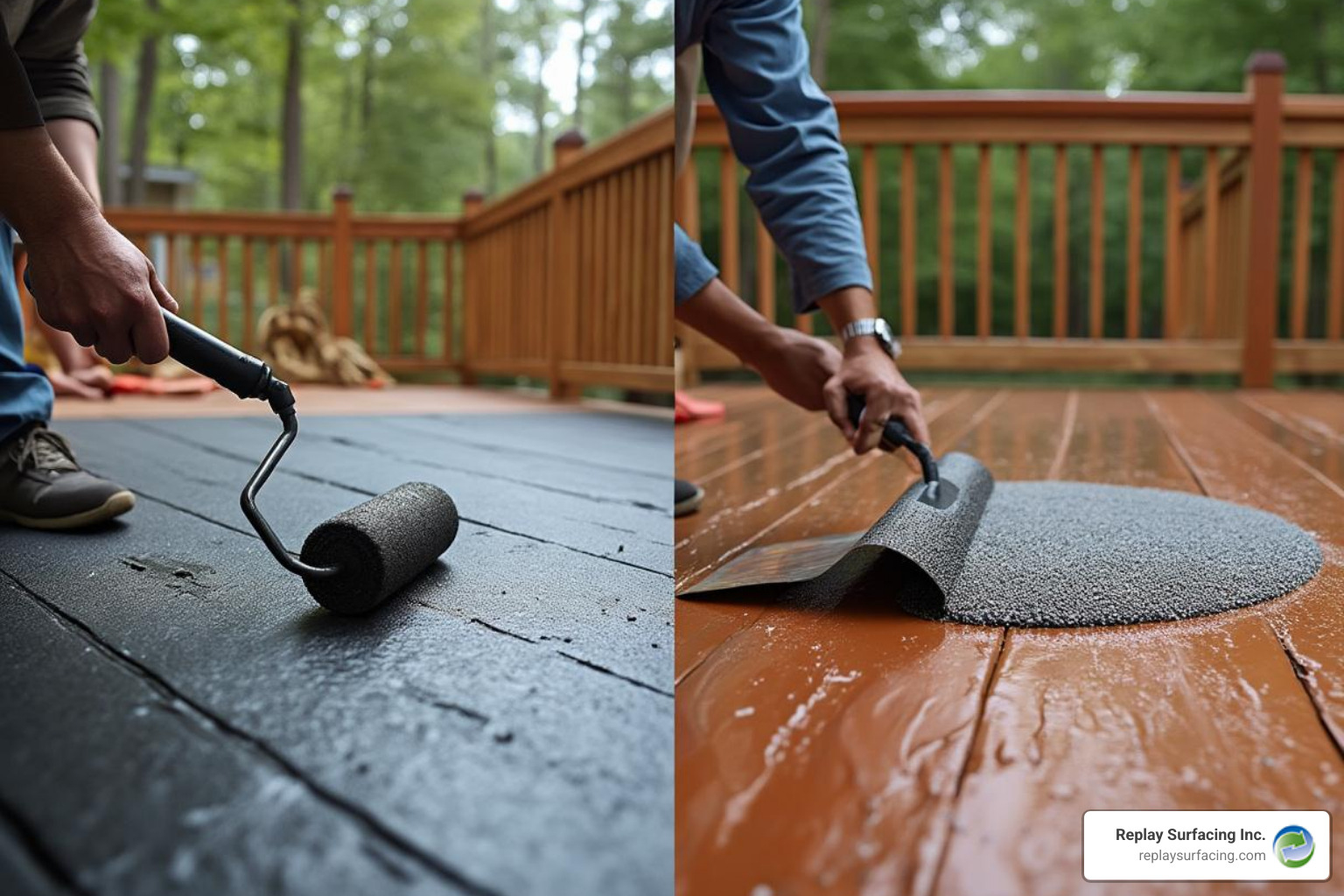
Understanding the differences will help you choose the best fit for your home. For a broader look at all the exciting possibilities, you can find more info about rubber decking here.
Liquid-Applied Rubber Coatings
Imagine painting your deck, but with a super-powered, flexible, and protective material! That’s essentially what liquid-applied rubber deck coatings are. These are typically single-component systems, meaning they come ready to use right out of the can – no tricky mixing needed. You simply apply them to your deck surface using common tools like paint rollers or brushes, just like you would with paint.
These coatings are often polyurethane-based, giving them incredible durability and flexibility. They’re a fantastic choice for existing, solid surfaces such as wood decks, concrete patios, plywood, vinyl, or even fiberglass that are in good shape but need a serious upgrade in terms of waterproofing, grip, and longevity. The great thing about liquid-applied coatings is their lower upfront cost and their DIY-friendly nature. They’re perfect for homeowners who enjoy tackling a small project themselves and want to give their deck a fresh, protective new look. If you’re thinking about using this for your concrete pool deck, our guide on more info about rubber coating for concrete pool decks offers some really helpful tips.
Professional Poured-in-Place Rubber Surfacing
Now, if you’re looking for the absolute best in durability, safety, and a truly custom finish, then professional poured-in-place rubber deck coating systems are the way to go. These amazing surfaces are created right on-site! We take recycled rubber granules (yes, often from old tires – turning environmental hazards into beautiful, valuable resources!) and mix them with a special epoxy or polyurethane binder. This mixture is then expertly poured and hand-troweled onto your prepared surface, creating a seamless, incredibly resilient, and wonderfully soft surface.
This method provides ultimate durability and superior cushioning, making it incredibly safe and comfortable. It’s especially popular for areas where safety is key, like pool decks and patios, or even playgrounds, because it offers fantastic impact absorption and is naturally ADA accessible, providing a smooth, stable surface for everyone. Plus, because it uses recycled materials, it’s an incredibly eco-friendly choice, helping reduce our carbon footprint. While the initial investment for a poured-in-place system might be a bit higher, its incredible longevity, minimal maintenance, and superior safety features often lead to significant long-term savings and peace of mind. You can find more info about poured in place rubber pool deck to see how this premium solution can truly transform your outdoor living space.
Your Guide to Applying a Rubber Deck Coating
Applying a rubber deck coating can be a rewarding DIY project, but success hinges on careful preparation and adherence to application guidelines. Whether you’re using a liquid-applied product or preparing for a professional poured-in-place installation, understanding the process, necessary tools, and ideal weather conditions is key.
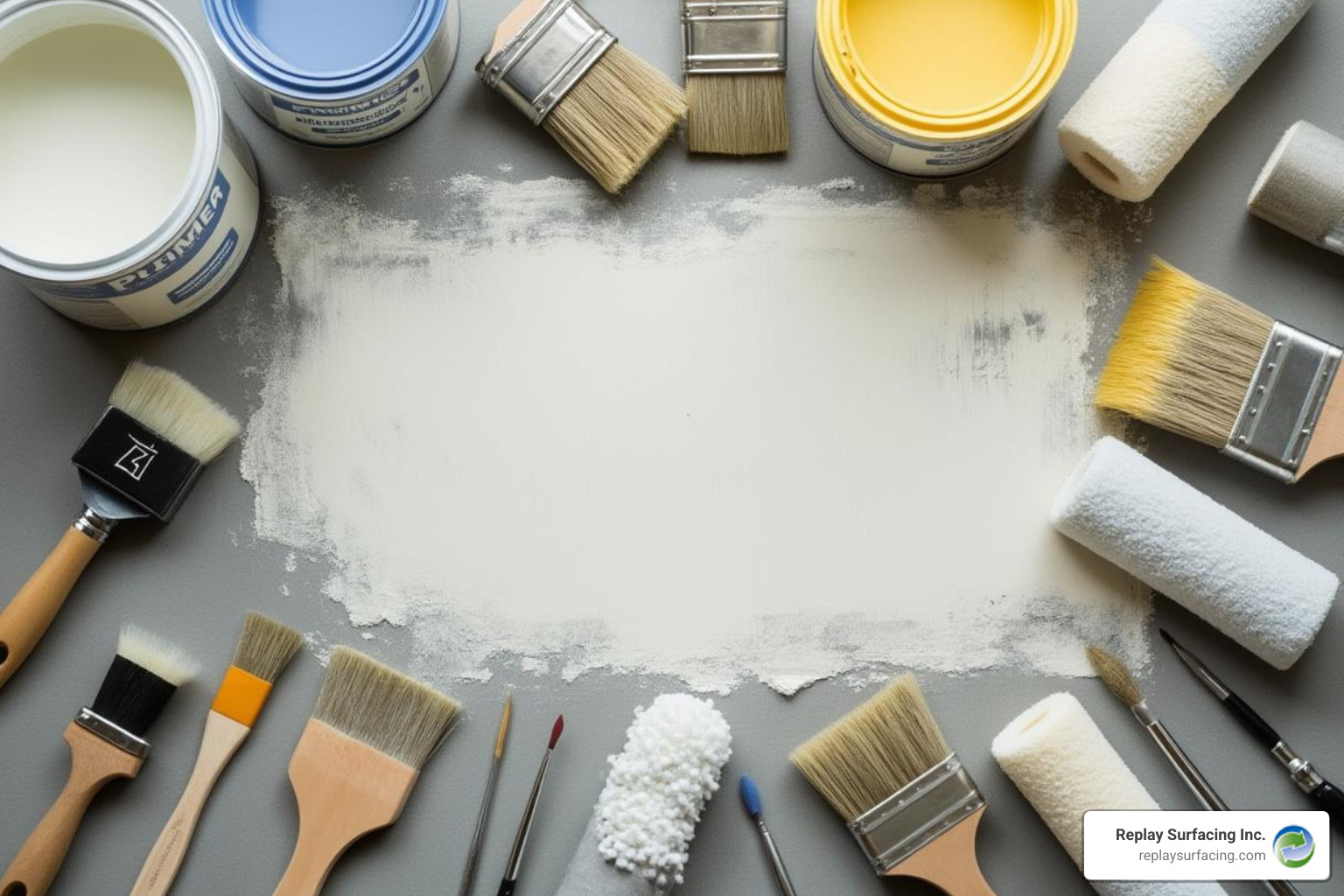
Compatible Surfaces and Preparation
Rubber deck coatings are incredibly versatile and can be applied to a variety of surfaces, including:
- Wood decks (deck boards, plywood)
- Concrete patios
- Vinyl
- Fiberglass
- Metal (non-corroded)
Regardless of your deck’s material, thorough surface preparation is the most critical step. All surfaces must be structurally sound, clean, dry, and free from contaminants like dirt, grease, oil, or mildew. For wood decks, ensure the moisture content is less than 15%; if it’s pressure-treated, allow 2-8 weeks for it to dry out and absorb water before coating. For concrete, it must be cured for a minimum of 28 days.
Preparation typically involves:
- Cleaning: Use a specialized deck and patio cleaner to remove all grime. For older decks with well-adhered paint, a rough sanding might be necessary after removing any loose or flaking paint.
- Repairs: Fill any gaps, seams, or screw holes with a high-quality wood filler or appropriate sealant. For cracks, use a dedicated sealant; for larger cracks, a suitable patching material may be required.
- Etching (for concrete): Concrete surfaces may benefit from an etching solution to create a better profile for adhesion.
- Moisture Check: Always ensure the surface is completely dry before proceeding.
Tools and Ideal Application Conditions
For liquid-applied rubber deck coatings, you’ll typically need:
- A standard paint roller (a ⅜” (10mm) microfiber roller is often recommended)
- Paint brushes for edges and detail work
- A mixing paddle (if the product requires stirring)
- Appropriate primer (often recommended for optimal adhesion and longevity)
- Cleaning supplies (cleaner, rags, buckets)
- Masking tape to protect adjacent areas
The weather plays a crucial role in the successful application and curing of your rubber deck coating. We always recommend applying these products in dry conditions, with no rain, fog, or heavy dew forecasted within 24 hours of application. The ideal temperature range for application is typically between 10°C (50°F) and 30°C (86°F), with humidity below 80%. It’s also vital that the surface temperature is at least 5 degrees above the dew point to prevent moisture issues. Avoid applying the coating in hot, direct, and intense sunlight, as this can cause it to dry too quickly and affect its adhesion.
The Step-by-Step Application Process
Once your surface is pristine and the weather is cooperating, you’re ready to apply your rubber deck coating.
- Detail Work: Address any cracks or imperfections. For small cracks (under 1/8 inch), a detail coat of the rubber deck coating itself might suffice. For larger cracks (1/8 to 1/4 inch), use a specialized sealant. For anything over 1/4 inch, repair with a suitable patching material that can bear weight.
- Priming: Apply a multi-purpose primer to the entire surface. This step is often overlooked but is crucial for reducing peeling and flaking, adding significant longevity to your coating. Allow the primer to dry for approximately 1-2 hours.
- Coating Application: Apply the rubber deck coating in heavy, generous coats. The coverage rate can vary, but generally, expect 1 gallon to cover between 30-50 sq ft for the final thickness, depending on the product and surface porosity. Most systems recommend 3-4 coats for standard areas, and 4-5 coats for high-traffic areas.
- Layering: Apply each subsequent coat in an alternate direction to the last to ensure even coverage. Allow approximately 4-6 hours of drying time between coats.
- Curing: The coating will typically be dry to the touch within 4-6 hours. However, for light foot traffic, allow 48-72 hours after the last coat. For placing furniture or heavier use, wait 5-7 days for the coating to fully cure and achieve its maximum strength.
Remember to remove any masking tape while the coating is still wet to ensure clean lines. For a comprehensive guide, including detailed steps for different deck types, check out more info about rubber pool deck resurfacing.
What to Expect: Longevity, Maintenance, and Customization
Investing in a rubber deck coating isn’t just about making your outdoor space look amazing right now; it’s about giving yourself long-term peace of mind. These clever solutions bring you top-notch durability, ask for very little in terms of upkeep, and offer incredible ways to customize your deck so it perfectly matches your home and personal style.
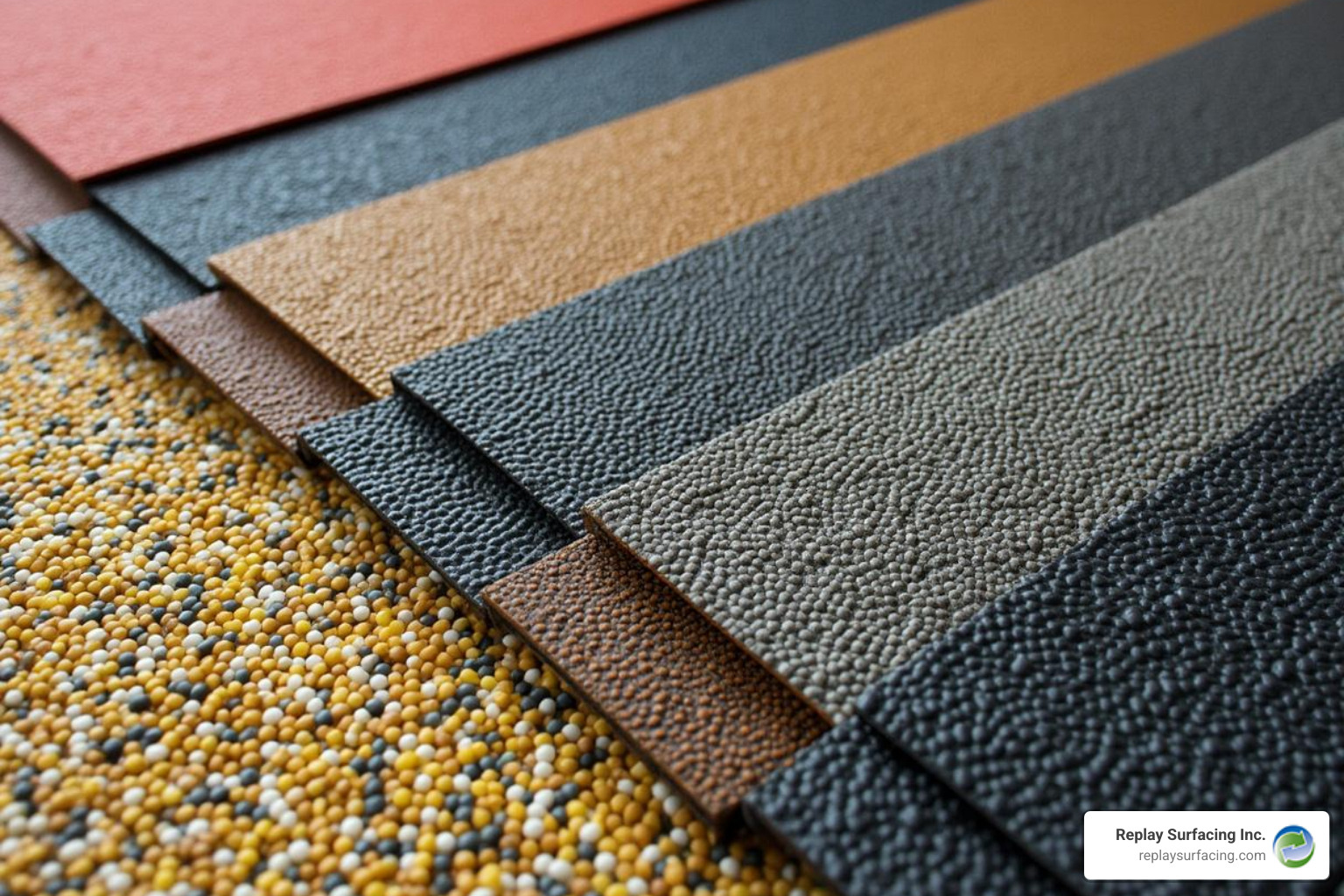
Ready to imagine your refreshed outdoor space? Dive into more info about pool deck surfaces to see the exciting possibilities.
Maintenance and Longevity of Your Rubber Deck Coating
One of the absolute best things about a rubber deck coating? It’s wonderfully low maintenance! You can finally say goodbye to that yearly chore of sanding, staining, and repainting your deck. Unlike traditional wood decks that often need staining every other year, or even composite decks that can sometimes warp and buckle, rubber deck coatings are built to give you years of trouble-free enjoyment. They simply refuse to crack, peel, or fade like ordinary deck paints.
Keeping your rubber-coated deck clean is super easy, too. Usually, all it takes is a quick scrub with some soap and water, or a simple hose down, to keep it looking fresh and new. No harsh chemicals or fancy equipment needed here!
When we talk about how long these coatings last, you’ll be happy to hear that many high-quality rubber deck coatings come with impressive warranties, often a 3-year product warranty. Good luck finding that with regular deck paint! This warranty typically covers things like the product failing, peeling, or cracking, as long as you followed the application rules. Just remember, warranties are usually void if the product wasn’t put on correctly, if you didn’t use enough of it, or if damage happens from structural problems, natural events, mean chemicals, or if the product gets physically changed. Always register your purchase to make sure your warranty is active and ready to go.
Customizing Your Deck: Colors and Textures
Your deck isn’t just a surface; it’s a part of your home’s unique style! And guess what? Rubber deck coatings give you a fantastic palette to play with for customization. While you’ll find plenty of reliable standard colors like browns, grays, and whites, some brands offer a huge range of hues. This means you can pick the perfect shade to match your home’s exterior or even create a fun, vibrant contrast that truly pops! If you’re feeling creative and want something truly one-of-a-kind, checking out Custom Color Pool Decks can give you some amazing ideas.
Beyond just colors, you also get to choose the texture. Many rubber deck coatings come in both smooth finish and textured finish versions. A smooth finish offers a sleek, modern look that’s generally easier to wipe clean. But for spots where slip resistance is super important – especially around pools, on stairs, or in areas that get a lot of rain – a textured finish is highly recommended. This is because it provides that extra non-slip grip that makes your deck much safer. Some clever folks even combine the two, using a textured coating in high-traffic or wet areas and a smooth finish elsewhere. This way, you get both top-notch safety and a beautiful look. The freedom to pick your color and texture means you can create a deck that’s not just safe and durable, but also a stunning reflection of your personal style.
Frequently Asked Questions about Rubber Deck Coatings
We understand that choosing the right deck coating is a big decision, and you likely have questions. It’s smart to be well-informed! Here are some of the most common inquiries we receive about rubber deck coatings, answered in a straightforward way.
How much does a rubber deck coating cost?
The cost of a rubber deck coating can vary quite a bit, much like the cost of any home improvement project. It really depends on the type of system you choose, the size of your area, and even where you live.
For those considering a DIY approach, liquid-applied coatings are generally more budget-friendly. The product itself might cost around $3-$4 per square foot. Just remember, this usually covers the coating material only, not primers, cleaners, or any repair supplies you might need for preparation.
On the other hand, professional poured-in-place systems are a premium investment. This reflects the high-quality, specialized materials (like recycled rubber granules that get a second life!) and the expert labor involved in creating such a durable and seamless surface. While the initial price tag might be higher, this option offers best durability, cushioning, and longevity. It’s an investment that truly pays off over time.
It’s crucial to think about the long-term value. While the upfront cost for a high-quality rubber deck coating might seem more than traditional paint or stain, these coatings drastically cut down on maintenance. No more yearly repainting or staining! This saves you both money and precious time in the long run. Plus, the improved safety and comfort they bring are invaluable benefits that are hard to put a price on. For more detailed information, including factors that influence pricing, please see our page on rubber pool deck cost.
Can I apply a rubber deck coating over old paint or stain?
Yes, in many cases, you absolutely can apply a rubber deck coating over old paint or stain. However, there’s a very important “but” here: proper preparation is absolutely essential! You can’t just slap a new coat over a failing surface and expect good results. Think of it like building a house – a strong foundation is key.
Here’s what you need to do to ensure great adhesion and a long-lasting finish:
First, remove all loose, flaking, or peeling paint or stain. This means getting down and dirty with scrapers, wire brushes, or even a pressure washer to ensure the surface beneath is sound and stable.
Next, even if the old paint is stuck on tight, it’s crucial to rough sand the surface. This creates a texture, or “profile,” that the new rubber deck coating can properly grip onto, ensuring a strong bond.
Finally, after all that scraping and sanding, the surface must be thoroughly cleaned. Get rid of every speck of dust, dirt, grease, and any other gunk. A specialized deck and patio cleaner is highly recommended for this step.
Skipping these crucial preparation steps can lead to big problems down the road, like poor adhesion, bubbling, or your beautiful new rubber deck coating peeling prematurely. If you’re ever in doubt, it’s often best to strip the existing coatings right down to the bare surface for the most reliable and long-lasting results.
How much rubber deck coating do I need?
Calculating how much rubber deck coating you’ll need for your project is pretty straightforward once you know the coverage rates of the product you’re using. Most rubber deck coatings will tell you how many square feet a gallon covers for the final thickness, which usually means it accounts for multiple coats.
For standard applications, you can generally expect about 1 gallon of coating to cover between 40-50 square feet. This typically accounts for 3-4 generous coats to build up the proper thickness.
If you have a high-traffic area or a particularly porous surface, you might need a bit more material. In these cases, plan for roughly 1 gallon per 30 square feet, which usually means applying 4-5 coats to achieve the desired durability.
To figure out your total needs, simply measure the total square footage of your deck. Then, divide that number by the product’s stated final coverage rate. For example, if you have a 200 sq ft deck and the product covers 50 sq ft per gallon, you would need 4 gallons (200 sq ft / 50 sq ft/gallon = 4 gallons). It’s more important to apply the correct total amount of material evenly over the surface to get the designed thickness and performance, rather than worrying too much about the exact number of coats you put down.
Conclusion: The Smart Choice for a Lasting, Beautiful Deck
Well, we’ve covered a lot of ground, haven’t we? When it comes to giving your outdoor living space the upgrade it truly deserves, a rubber deck coating really does stand out as a smart, modern choice. It’s not just about covering up an old surface; it’s about changing it into something truly special.
We’ve seen how these coatings offer amazing durability, creating a surface that can be 10 times stronger than regular deck paint. Imagine a deck that laughs in the face of harsh weather, heavy foot traffic, and even those strong UV rays from the sun! Plus, let’s not forget the incredible safety benefits. With textured, non-slip finishes, you can relax knowing your family and friends are safer, even when the deck is wet. And that wonderful ability to keep your deck cool underfoot? That means more barefoot comfort on even the hottest summer days. All of this comes wrapped up in a package that demands incredibly low maintenance, freeing you from the never-ending cycle of repainting and allowing you to simply enjoy your beautiful outdoor space.
Whether you’re leaning towards a DIY-friendly liquid-applied coating or considering a professionally installed poured-in-place system, you’re making a fantastic investment. It’s an investment in longevity, peace of mind, and a truly stunning aesthetic appeal for years to come. For that premium, sustainable, and expertly installed surface, our poured-in-place systems here at Replay Surfacing are truly revolutionary. We’re proud to transform recycled tires – yes, those environmental hazards! – into a beautiful, resilient deck that’s perfect for any home.
So, are you ready to reclaim your backyard and step onto a deck that’s not only gorgeous but also built to last? We’d love to help you explore all the possibilities. Dive deeper into rubber surfacing for patios, pools, decks, walkways, and driveways and let us help you transform your outdoor space today!

